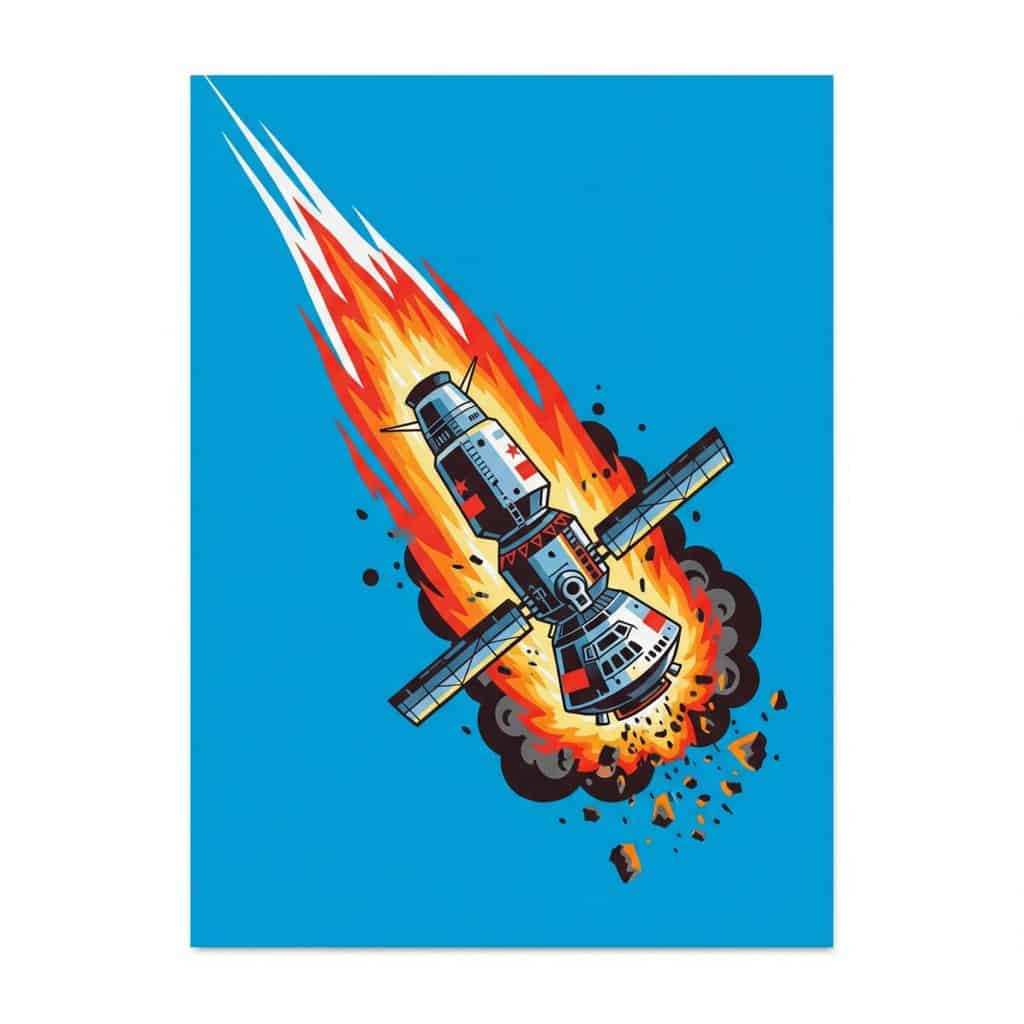What Is Cosmos 482?
Back in the heyday of the Space Race, the Soviet Union launched Cosmos 482 in 1972, intending it to be a Venus lander. But fate had other plans—a rocket failure left it stranded in Earth’s orbit instead. For over 50 years, this piece of Cold War-era space junk has been circling our planet, silently waiting for its inevitable return. And now, that moment might finally be here.
Why Is It Making Headlines Now?
Satellites re-enter Earth’s atmosphere all the time, but Cosmos 482 is special. Unlike smaller debris that burns up completely, this satellite is massive—weighing nearly 1,100 pounds. Experts predict some chunks could survive the fiery descent and crash-land on Earth. The big question? Where will it hit?
When and Where Will It Crash?
Predicting exact re-entry points is tricky—atmospheric drag, solar activity, and even space weather play a role. Current estimates suggest it could happen anytime in the next few years, but no one knows for sure. Given its orbit, potential impact zones could be anywhere between 51 degrees north and south latitude, covering a huge swath of populated areas.
Could It Pose a Danger?
The odds of Cosmos 482 hitting someone are astronomically low—most of Earth is ocean or uninhabited land. But imagine a half-ton chunk of Soviet-era tech smashing into your backyard! While unlikely, it’s a reminder of how much space junk is still up there.
What’s Inside the Satellite?
This isn’t just any old satellite—it was designed to withstand Venus’s hellish conditions, meaning it’s built like a tank. Some speculate it might contain toxic fuels or radioactive materials, though most experts believe any hazardous components would’ve degraded by now. Still, if you stumble upon a weird, scorched metal object in the near future, maybe don’t touch it.
The Bigger Problem: Space Debris
Cosmos 482 is just one of thousands of defunct satellites and rocket parts cluttering Earth’s orbit. With companies launching mega-constellations (looking at you, SpaceX and Amazon), the risk of collisions—and more uncontrolled re-entries—is growing. Who’s responsible if a piece of space junk takes out a car… or worse?
Conclusion
The return of Cosmos 482 is a fascinating mix of history, science, and a little bit of danger. While it’s unlikely to cause harm, its journey reminds us that space isn’t as distant as we think—what goes up must eventually come down. So next time you look at the night sky, remember: some of it might be coming back sooner than we’d like.
FAQs
1. Has Cosmos 482 started re-entering yet?
No, but experts believe it could happen within the next few years.
2. How big is the risk of it hitting someone?
Extremely low—most of it will burn up, and the rest will likely land in unpopulated areas.
3. Could the satellite contain dangerous materials?
Possibly, but any hazardous components have likely degraded over 50 years in space.
4. Who owns Cosmos 482 now?
Since the USSR no longer exists, it’s technically “abandoned” space debris.
5. What can we do about space junk?
Better tracking, controlled de-orbiting, and international agreements are key to managing the growing problem.


We want to hear your what you have to say